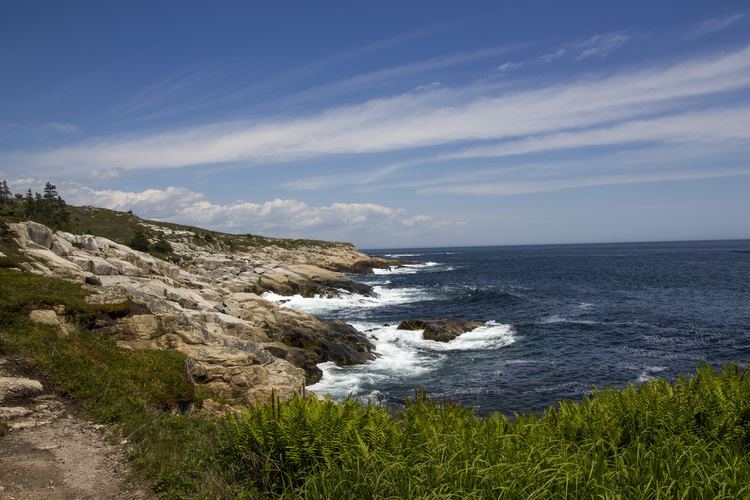Province Nova Scotia | ||
 | ||
Duncan s cove nova scotia
Duncan's Cove is a small rural community on the Chebucto Peninsula in the Halifax Regional Municipality on the shore of the Atlantic Ocean on the Ketch Harbour Road (Route 349 ), 19 kilometers from Halifax. The community is located beside Chebucto Head, the prominent coastal headland.
Contents
Map of Duncans Cove, NS, Canada
History
Duncan's Cove began as a small fishing community. The first recorded settler in Duncan's Cove was Simon Duntoyn in 1752. Other families followed including the Crab, Full, Leonard and McNab families. John McNab was granted 50 acres (200,000 m2) in 1859. The cove was named after Admiral Adam Duncan, 1st Viscount Duncan who defeated the Dutch at the Battle of Camperdown.
Overlooking the entrance to Halifax Harbour made it a strategic part of Halifax's defense system in the 18th century. The Camperdown Signal Station, was built a few miles northward next to nearby Portuguese Cove in 1797, the first of a series of signal stations built by Prince Edward, Duke of Kent. It later became a wireless station and was operational until 1925.
In World War Two, the area around Chebucto Head, including Duncan's Cove, became a fortified coastal battery armed with three Elswick 6 inch naval guns. For these cannon, a four-story concrete director tower was built near the eastern shore of Duncan's Cove with a long-range optical rangefinder installed on the top floor. By 1943, this range-finding apparatus had been supplanted by the latest radar artillery control unit. The battery complex was decommissioned in the 1950s but many bunkers remain, some converted into private residences.
After the Second World War two families of musicians who played with the Atlantic Symphony Orchestra moved to Duncan's Cove. One of those families embarked upon a decades-long construction project of unconventionally shaped timber-framed dwellings, and even had a small private airstrip. By the late 1960s, fishing from the cove had dwindled and the community become known as an artists colony, with many symphony players, visual artists and theatrical actors residing there. The landmark gunnery director tower stood derelict for many years, until finally passing into private hands in the 1990s. The building is virtually unrecognizable today, having been radically converted into a luxury residence.
Communications
Lighthouse
The first of several lighthouses was built at Chebucto Head in 1872 with a steam foghorn just below it. The lighthouse was moved in 1940 several hundred metres to the north to make way for the gun battery. The lighthouse included a launch ramp for a lifeboat, as well as an old naval carronade for firing blank charges as a crude foghorn. Some ruins of the original lighthouse can be seen to this day (2008)
The present lighthouse, a concrete tower, was built in 1967 and is situated high atop a bluff. The lighthouse was automated in the 1990s, and a massive array of electronic foghorns erected. The light-keepers house was left vacant for several years, then rented, and then vacant once more. It was burned by vandals in 2004.
There is an area of pavement around the base of the lighthouse tower which today serves as a parking lot, popular with sightseers. This parking lot is a whale-watching location during January and February, when pods of fin whales feed in the area before migrating elsewhere.
